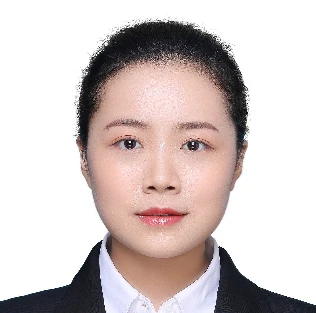3415 - Jianzhong Qushi Formula for Treating Chronic Radiation Induced Proctitis with Deficiency Syndrome: A Protocol for a Multicenter, Prospective, Randomized Controlled Clinical Trial (ACORN STUDY)
Presenter(s)

Y. Cui1, L. Feng1, Y. Zhai2, S. Li1, Y. Chen1, N. Li3, S. Shang4, S. Hu3, H. Li3, Y. Jin3, J. Yu3, Y. Yan1, Z. Cheng5, M. Li6, G. Chen7, and W. Wang8; 1Department of Traditional Chinese Medicine (TCM), National Cancer Center/National Clinical Research Center for Cancer/Cancer Hospital, Chinese Academy of Medical Sciences and Peking Union Medical College, Beijing, China, 2State Key Laboratory of Molecular Oncology and Department of Radiation Oncology, National Cancer Center/ National Clinical Research Center for Cancer/ Cancer Hospital, Chinese Academy of Medical Sciences and Peking Union Medical College, Beijing, China, 3Department of Oncology, Dongzhimen Hospital of Beijing University of Chinese Medicine, Beijing, China, 4Department of Radiation Oncology, National Cancer Center/National Clinical Research Center for Cancer/Cancer Hospital, Chinese Academy of Medical Sciences and Peking Union Medical College, Beijing, China, 5Oncology Department of Integrated Traditional Chinese and Western Medicine, China-Japan Friendship Hospital, Beijing, China, 6Department of Oncology, Nanjing Hospital of Chinese Medicine Affiliated to Nanjing University of Chinese Medicine, Nanjing, Jiangsu, China, 7Tongji Hospital affiliated to Tongji Medical College of Huazhong University of Science & Technology, Wuhan, Hubei, China, 8The Second Affiliated Hospital of Chongqing Medical University, Chongqing, China
Purpose/Objective(s): Chronic radiation proctitis (CRP), a common complication following pelvic radiotherapy, occurs in approximately 20% of patients. Clinical manifestations include abdominal pain, tenesmus, and severe complications such as intestinal obstruction and sepsis. The protracted course significantly impairs patients' quality of life. Current guidelines recommend therapies like sucralfate and corticosteroids, yet clinical efficacy remains suboptimal (50-60%), highlighting the need for novel regimens. In clinical practice, traditional Chinese medicine (TCM) serves as a complementary approach. CRP is classified under TCM syndromes of intestinal discharge, diarrhea, or dysentery. The TCM mechanism involves collateral damage affecting the spleen with lingering pathogenic factors. Based on this framework, the Jianzhong Qushi Formula was developed. The formula focuses on strengthening the spleen and regulating the intestines, and was authorized by the Chinese National Patent Office (Patent No. ZL202210097886.0). While preliminary clinical observations support its efficacy, high level evidence, especially the evaluation based on both international and TCM standards is warranted. To investigate the efficacy and safety of Jianzhong Qushi Formula in treating CRP, we designed this multicenter, open label, randomized trial.
Materials/Methods: This study is a multicenter, randomized, double-blind, placebo-controlled trial. Patients diagnosed as CRP and without TCM history will be enrolled and randomly assigned to either the treatment group (receiving standard care plus Jianzhong Qushi Formula, 100 ml bid, *28days) or the control group (receiving standard care plus placebo 100 ml bid, *28days). All of the patients received both The primary endpoint is the clinical response rate, defined as fulfilling one of the following, RTOG grade reduction, ? RTOG/EORTC grade reduction; ? =1 symptom downgraded by CTCAE v5.0; ? Symptom improvement according to TCM symptom standards .The secondary endpoints included TCM syndrome score reduction rate, LENT/SOMA score changes, changes in gut microbiota, quality of life(QoL) , etc. Assuming 57.5% efficacy for conventional therapy vs. 87.5% for integrative therapy, 168 patients (84 in each group) will be enrolled. Continuous variables will be analyzed by t-test (normal distribution) or Mann-Whitney U test (non-normal), with two-tailed P<0.05 considered significant.
Trial registration: NCT06837597Results: TBD
Conclusion: TBD
